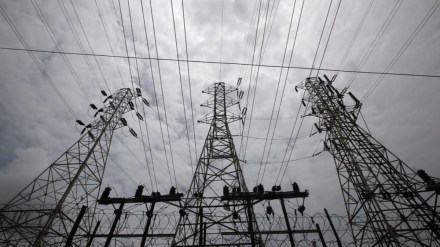By Praveer Sinha,
In recent years, there has been a rising frequency of extreme climate events, including intense heatwaves, cold spells, excessive rainfall, and cloudbursts. 2023 was the hottest year on record, and India saw extreme weather on 318 of the 365 days. The recent landslides in Kerala, flash floods, and extremely high temperature across India underscore the huge human and economic losses from climate change.
In this context, to match the fast economic growth and rising electricity consumption (average 8% year-on-year), India has to rapidly change its power generation mix to a larger share of clean and renewable energy (RE), in an effort to adhere to sustainable development goals. Between 2015 and 2024, India added 175 gigawatt (Gw) power generation capacity, with 65% coming from renewables. The goal to generate 50% of all power from non-fossil sources by 2030 underlines India’s commitment to energy security through sustainable means.
This strategy is based on a strong policy framework and reforms. The government aims to diversify the energy mix by focusing on renewable sources like solar, wind, hydroelectric along with pumped hydro and small modular nuclear reactors (SMRs). As of July, with ~87 Gw solar, 47 Gw wind, and 47 Gw hydroelectric, non-fossil fuel sources accounted for 44% of India’s total installed electricity generation capacity. Tata Power supports this transition with its installed clean capacity of 6.1 Gw, pipeline of 5.3 Gw, and a goal to achieve 70% clean energy portfolio by 2030.
RE from solar and wind is intermittent and requires storage technologies like pumped hydro and electric battery for round-the-clock supply. The recent Union and state Budgets highlighted policy support for these technologies. Multiple companies including Tata Power are working towards realising this. The Union Budget also mentioned developing SMRs for base load applications via public-private partnerships. This aligns with the acceptance of nuclear energy, witnessed during COP28.
India’s RE goal relies on public-private synergy. Government policies, including subsidies, performance-linked incentive, and tax incentives, have created a favourable environment for private investment, with $60 billion for clean energy in 2023, up nearly 40% from the 2016-20 average. Independent power producers, start-ups, and corporations drive innovation and job creation. Public sector entities like the Solar Energy Corporation of India are partnering private players to co-finance and execute RE projects, enhancing resource utilisation and risk-sharing.
Cross-border collaborative efforts, aligned with strategic investments, is setting the ground for India to lead global energy transition. Tata Power, with its origins in hydro power, is expanding clean energy availability through collaborative projects in Bhutan.
Green bonds, foreign direct investments, and climate finance are crucial for supporting India’s clean energy projects. India has advanced cooperation with countries and global institutions for technology transfer and capacity building in RE. In 2023, global investment in clean energy reached a record $1.77 trillion, up 17% from 2022.
The growth of India’s power sector hinges on robust support from original equipment manufacturers, other manufacturers and suppliers. With the industry projected to reach $130 billion by 2030, manufacturing and exports are crucial. Projects like the newly commissioned Tata Power Solar 4.3 Gw Tirunelveli solar module cell manufacturing plant exemplify efforts to build Atmanirbhar Bharat and commitment to becoming an important player in the global supply chain.
To meet targets, we need reliable power supply at affordable rates, with significant investments in storage solutions, clean energy technologies, and power evacuation infrastructure. According to a Moody’s estimate, power firms will need to invest $190-$215 billion to achieve 500 Gw of clean and RE capacity by 2030. An additional $150-$170 billion will be required for expanding and enhancing transmission, distribution, and energy storage systems.
Achieving 50% non-fossil fuel power generation by 2030 is an ambitious goal. Together, we can ensure a resilient and sustainable energy future for our country.
The author is Speaker, POWERGEN India and Indian Utility Week 2024, and CEO & MD, Tata Power Company.
Disclaimer: Views expressed are personal and do not reflect the official position or policy of Financial Express Online. Reproducing this content without permission is prohibited.
